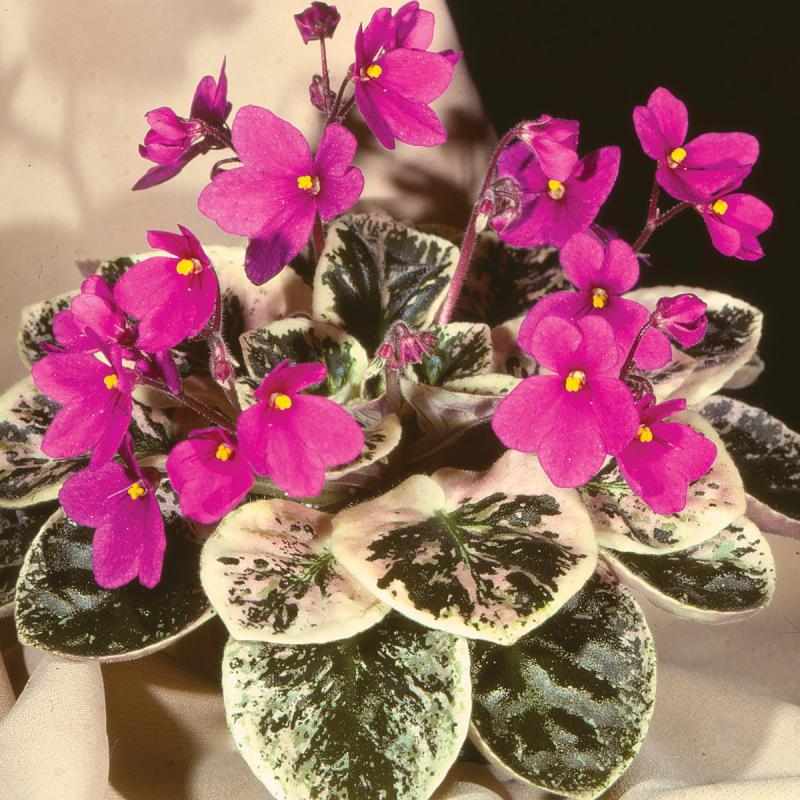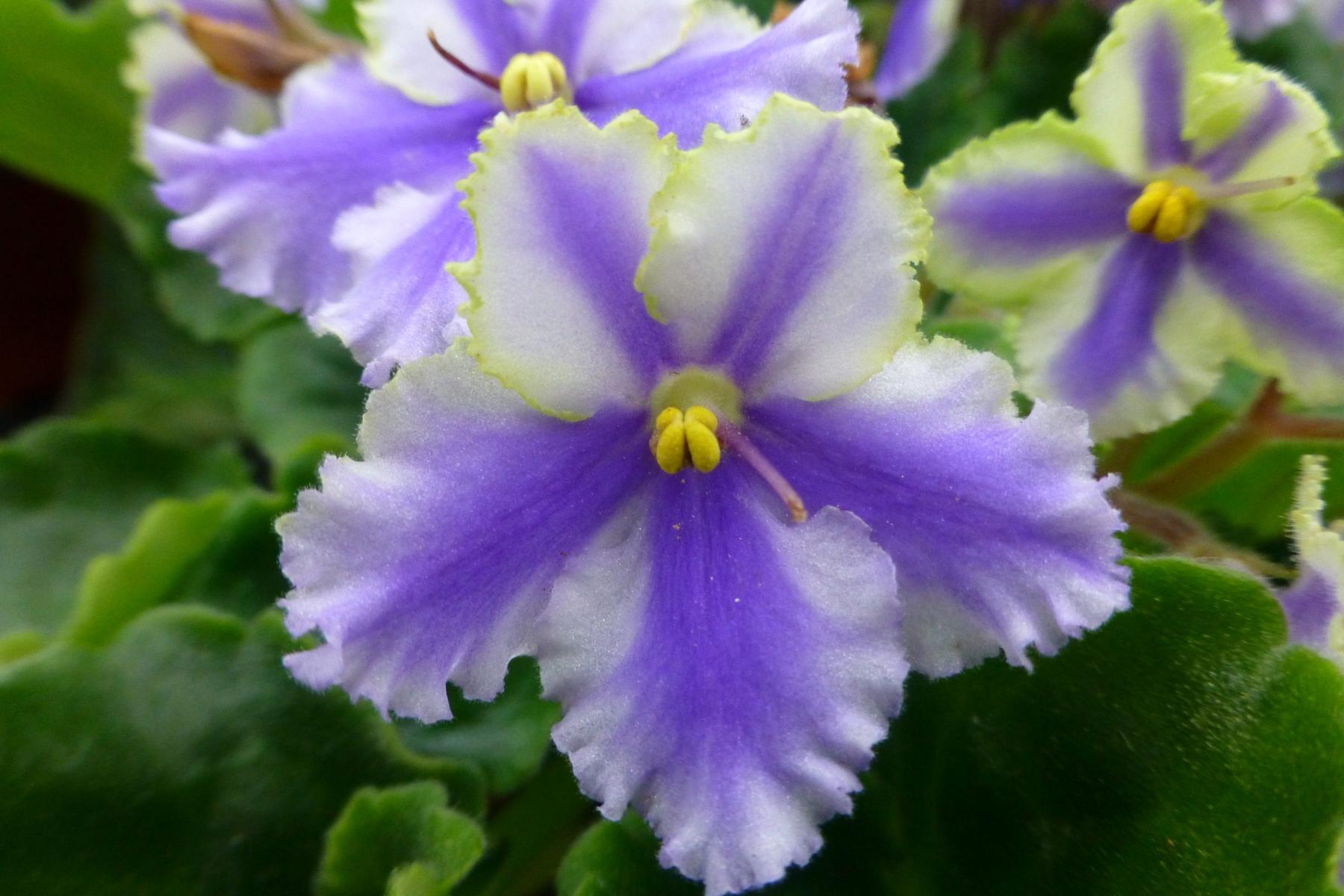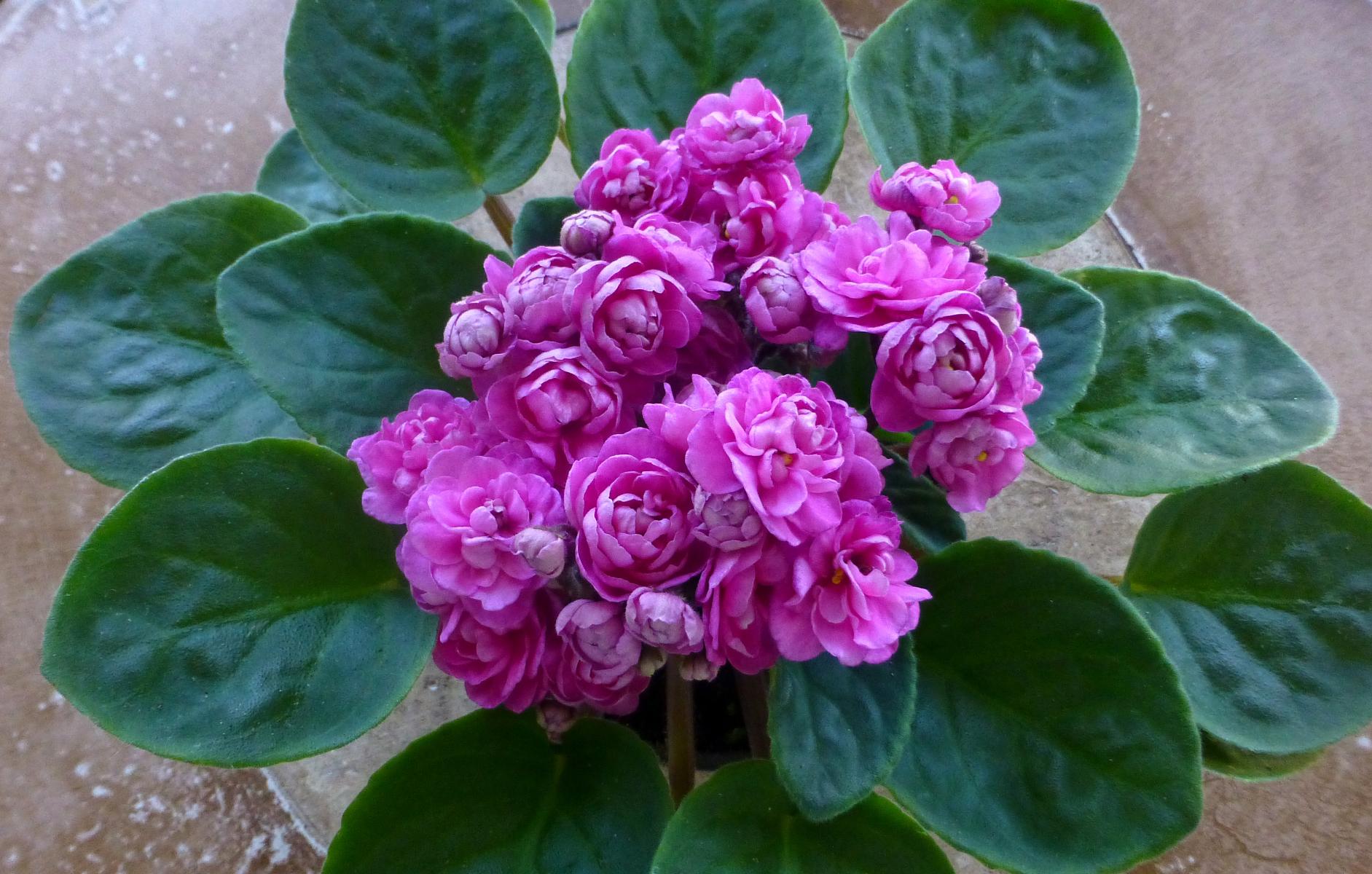
African violet, Saintpaulia ionantha, was originally discovered growing in the wooded Usambara mountains near the border between Kenya and Tanzania in 1892. The original plant was collected by Walter von Saint-Paul-Illaire, after whom the genus was named. It was sent to a plantsman in Hanover, Germany and quickly caught the attention of plant-lovers. By 1927, the first commercial hybrids, all with blue flowers, debuted in the gardening market. Since that time, nearly 100 years of plant breeding efforts have resulted in many innovations, including plant size, leaf shape, leaf and flower coloration, number of petals, and ruffled leaf and petal edges. With their beauty and easy-care nature, it's no surprise African violets are one of the most popular house plants in the world.
African violets are popular gift plants year-round, but are particularly numerous from Christmas through Valentine's Day. They are beautiful and surprisingly easy to grow, even for the beginning gardener and small enough even apartment dwellers can find a small spot to brighten with their cheerful flowers.
African violet flower colors run the gamut from showy white through pink, rose to deep purple. Flowers may be solid colored or bicolored; for example white flowers with pink or purple edges, or purple with white edges. Single flowers, some with frilly edges, and fully double flowers that look like miniature roses are also available. Variegated foliage is another attractive feature.
 Indoor Care
Indoor Care
Caring for African violets is easier than many people think. They do best when potted in a prepared soil mix with some added humus, such as peat moss. Soil mixes specifically formulated for African violets are available at garden centers or home stores.
Watering - When watering African violets, its important to keep the water off the leaves. Plants with hairy leaves, like African violets, don’t like to get their foliage wet, especially if the water is cold. Brown spots may develop on the leaves as a result of cold water on the foliage.
Plants can be watered from the top or from the bottom by placing the plant pot in a container with 1-inch of water and allowing the water to be soaked up into the soil from the base. Wait 30 minutes for water to be absored, then allow the plant's container to drain off any excess. Or plants can be watered using a wick inserted into the drainage hole at the base of the container. Whichever method you use, water plants thoroughly enough to wet the entire soil ball, then let the soil become dry to the touch before watering again.
Extra Humidity - The humidity in most people’s homes is lower than African violets prefer especially in the winter, so plants can benefit from added humidity. One way to achieve this is by grouping plants together in a room where humidity naturally tends to be a little higher, such as the kitchen or bathroom.
A pebble tray is another technique for increasing humidity. Choose a tray or saucer, slightly larger than the African violet container, and fill it with gravel or decorative stones. Place the African violet on top of the stones Then pour water amongst the stones in the saucer, but keep in mind the water should not reach the base of your container. As the water evaporates it will increase humidity around your plant.
Light - African violets prefer bright light, but not direct sun, which can burn their foliage. With sufficient light, African violets are compact plants, with leaves on short petioles closely spaced on the stem. From above, a well grown violet looks like a horizontal rosette topped with a bouquet of brightly colored blossoms
If your African violet just sits there all winter, getting tall, straggly-looking and refusing to flower the problem is usually low light. Try placing them under fluorescent lights for 12 to 16 hours a day for a few weeks. That should get them flowering. Plants also bloom best when moderately rootbound.
Fertilization - Fertilize your plant when it is actively growing, usually from spring through fall, or during winter if you provide supplemental lighting. Choose a water soluble fertilizer, preferably one specifically formulated for African violets. Apply it as directed on the label.
 Propagation
Propagation
African violets can be propagated in several ways. Over time plants often form multiple crowns, which can be divided periodically and potted up separately. Make sure each division gets a significant share of the original root system. When repotting the new plants, make sure the crown of each plant, where new leaves originate, is up out of the soil.
Another simple method of propagation is rooting leaf-petiole cuttings. To start, choose healthy mature leaves and break them away from the parent plant, leaving 1 to 1.5 inches of the leaf petiole attached to the base of the leaf. Dip the wounded end of the leaf petiole in a rooting hormone, then insert it into a rooting medium of coarse sand or vermiculite, or a mixture of the two. Cover the container with a clear zip-lock bag to hold humidity around the leaves while they root and place it in a bright window where the temperature will be between 65-75 degrees F. Keep the soil medium moist until the cuttings have rooted, usually four to six weeks.
For more information on this year's featured plants, visit the National Garden Bureau. The National Garden Bureau provided a portion of this article, as an educational service with no limitations on its use.
Images from the National Garden Bureau.
- Some African violet flowers have beautiful, ruffled edges to their petals or leaves.
- Flowers can have a single layer of petals or double flowers with many petals.